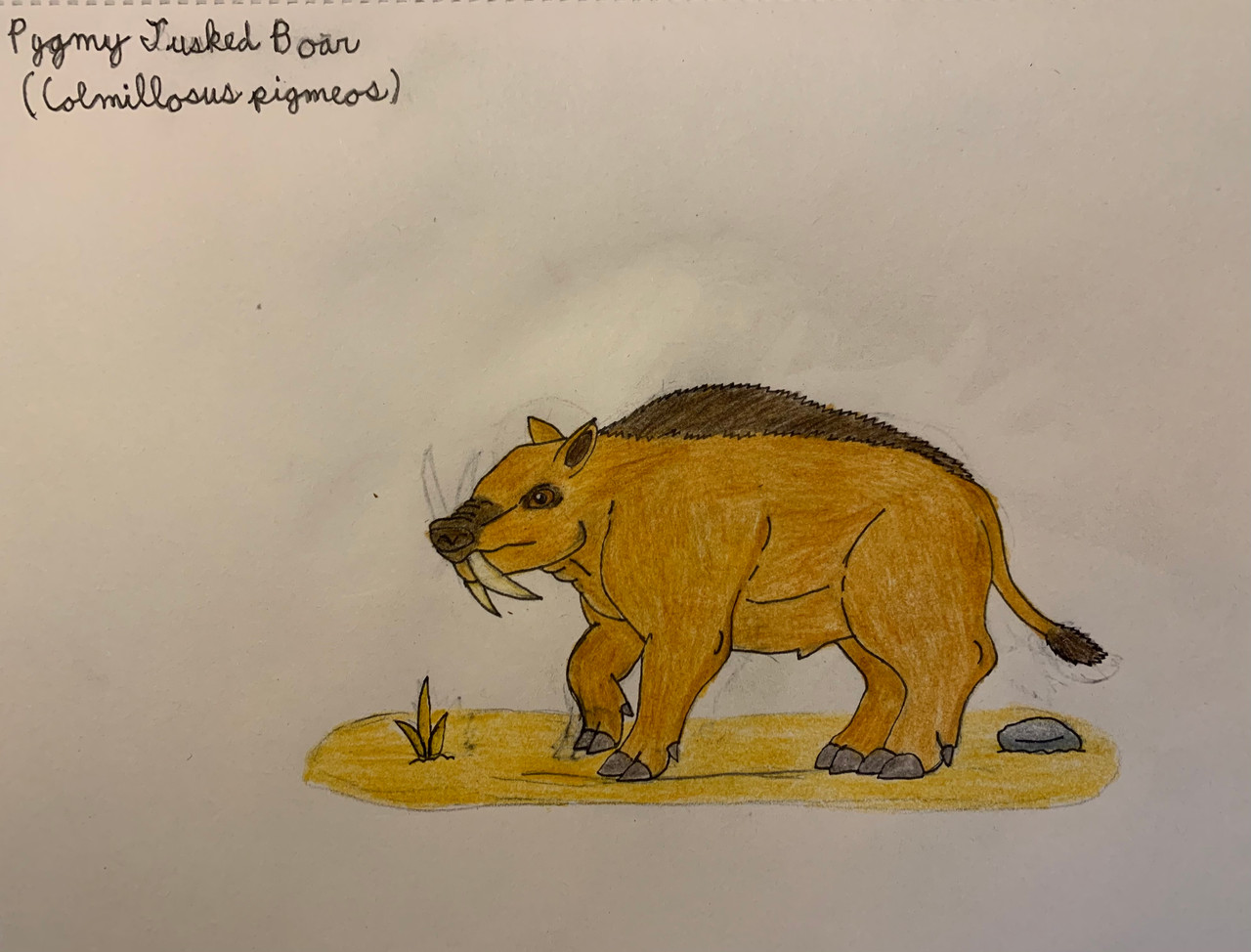HOME | DD
 ScreenSamurai — Pygmy Tusked Boar
ScreenSamurai — Pygmy Tusked Boar

#animal #boar #desert #hoofedanimal #mammal #northamerica #pig #pygmy #tusk #tusked #ungulate #eventoedungulate #tuskedboar #futureevolution #speculativeevolution #speculativebiology #speculativezoology #tuskboar
Published: 2021-04-24 23:49:41 +0000 UTC; Views: 9571; Favourites: 69; Downloads: 2
Redirect to original
Description
Common Name: Pygmy Tusked BoarScientific Name: Colmillosus pigmeos
Length: 30 to 90 centimeter from head to rear
Weight: 20 to 50 kilograms
Diet: Roots, grasses, berries, insects, and carrion
Distribution: The Southern cactus forests and open deserts in the Midwestern American Desert and the dry grasslands of the American Great Plains in North America
Lifespan: 5 to 10 years
Description: Invasive animals were always a problem for North American ecosystems. Some of these invasive animals include carp, starlings, zebra mussels, and beetles. However, one of the biggest problems for human farmers was the feral pigs. These large swine tore up the farmland and native environments of the United States. These animals forced people to hunt them, but they were unsuccessful. The feral pigs have many descendants, and one of those is the pygmy tusked boar.
The pygmy tusked boar is the smallest member of its genus due to a lack of food in the desert. They are also the only species of tusked boar that is nocturnal. Although their eyesight isn’t good, their sense of smell allows them to see with their nose. They also use their nose to dig up roots and insects. The pigs used their tusks to defend themselves, strip off bark from trees, and fight each other. Since these tusks break easily, they evolved teeth that never stop growing, similar to rodents. The problem is they will grow too long if they don’t use them for a long time. Although, this event rarely happens since they use their tusks for so many things. The body plan of these mammals allows them to run at high speeds for longer distances. This adaptation mainly comes when play when the boars are running from the hyena-dogs. Hyena-dogs can run for long distances, so the pygmy tusked boars evolved along a similar line.
Like most boar species, these boars live in large groups of 20 to 30 different individuals. The members of this herd help these animals protect all their babies. If a predator approaches the herd, every member of the group will run in the opposite direction. The adults of the group will create a barrier around the young. If a predator attacks an adult boar, the boar will try to stab the attacker with its tusks. After a while, the predator will tire and fall behind the herd, and the boars are free to go. This plan isn’t perfect since some predators are strong enough to take a healthy boar down. However, it does work for most predators of the desert and has allowed them to grow in population.
Related content
Comments: 5

👍: 2 ⏩: 0

👍: 1 ⏩: 1

👍: 0 ⏩: 1

👍: 1 ⏩: 1

👍: 0 ⏩: 0























